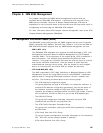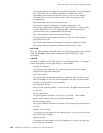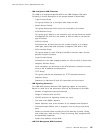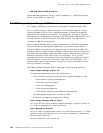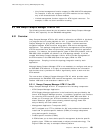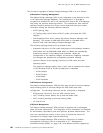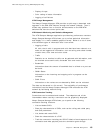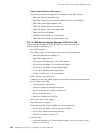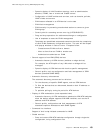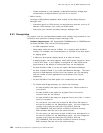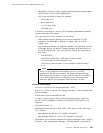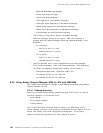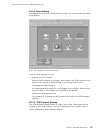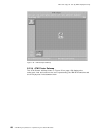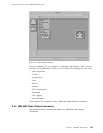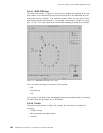This soft copy for use by IBM employees only.
− Dynamic display of LAN Emulation topology, such as administrative
domains, ELANs, lists of clients and related servers
− Configuration of LANE entities and services, such as domains, policies,
LANE clients and servers
− ELAN status reflected in an ATM device′s color state
− ELAN fault management
− ELAN security for preventing unauthorized station to connect a given
ELAN group.
− Central point for accessing servers error log (LECS/BUS/LES)
− Drag and drop operations for add/remove/change on configuration
− Use of templates to ease the ELAN management
Templates are predefined automated scenarios that hide the complexity
of each ELAN elementary configuration action. The user will be helped
with pop-up windows in case of errors. Examples follow:
- Create/remove ELANs to/from a domain
- Move a client from an ELAN to another one
- Administer/un-administer an ELAN
•
Generic support of non-IBM (OEM) devices:
− Automatic discovery of OEM devices (switches or edge devices)
For example, the ATM uplink of any LAN switch or bridge will be
managed.
− Dynamic display of OEM devices with hook to specific management
− Generic profile, such as configuration and fault management of OEM
devices (standard SNMP MIBs)
•
Automatic discovery enhancement
The automatic discovery process can be relied on:
− For the discovery of specific SNMP agents, such as OEM devices
− To filter the devices that are discovered, based on their IP address or
device type
− To optimize polling by tuning its period for ATM devices
•
Display of ATM workstations (node expanded view)
− Automatic discovery of ATM workstations attached to IBM ATM switches
when the station adapter supports ILMI MIB variables, such as the IP
address and ATM address.
− Generic profile, configuration and fault management of ATM
standard-compliant workstations with SNMP agents.
•
Command line interface
Support of shell script-initiated commands for LANE.
•
Global services
− Save and restore IBM ATM switches configuration through single-slot
configuration, using configuration files.
Chapter 8. IBM 8285 Management 153



